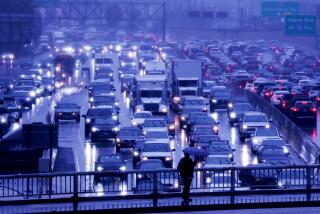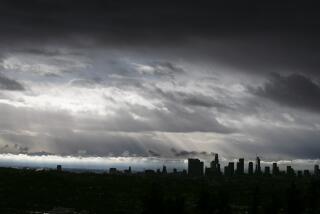How You Can Prepare for a Natural Disaster
No matter where you live, a natural disaster can occur--flood, earthquake, fire or winter storm. For most people, the major focus following a serious earthquake will be personal safety, assessing injuries and removing people from hazardous situations. Commonly forgotten, however, is potential danger from quake-vulnerable utilities and heating systems. With some planning you can protect you home from these disasters. Below is a checklist of some things to consider for keeping your home safe in case of a catastrophe.
Utilities
--Locate water, gas and electric shut-offs. Know how to turn these off.
--Keep tools required to turn off utilities in a convenient place.
--Label gas and water main inlets, and main electric circuit breaker for easy identification.
Appliances
--Securely strap your water heater to the studs. Use two-inch wide sheet metal strapping and lag screws with oversized washers. This prevents it from falling over and rupturing gas line or causing an electrical short.
--Use flexible connectors to gas appliances. This reduces the risk of rupture.
Chimney
--Keep trees or other vegetation at least 15 feet from chimney or stovepipe.
--Line chimneys to safeguard structural walls from fire damage.
--Inspect all sheet metal flues connecting the furnace or water heater to the chimney. All joints should be secured with a minimum of two sheet metal screws per joint to prevent separation.
Roof
--Use non-combustible or fire-resistant roofing materials.
--Choose wind-resistant roofing material.
--Make sure your roof is designed to handle the wind, snow loads in your area.
--Install gutters to divert water away from roof and downspouts to carry water at least two feet away from home.
--Keep roof and gutters free of leaves and pine needles.
--Make sure gutters and down spouts are secure during wind storms.
--Provide convenient roof access and a place to wait out rising flood waters.
Landscaping
--Trim trees to eliminated limbs that overhang your home or garage.
--Plant vegetation outside of power line areas.
--Keep tree branches trimmed away from overhead power lines.
--Keep firewood and other combustibles stored away from house.
--Plant low growing and less flammable trees and shrubs. Consult your county extension office for advice on those most suitable for your environment.
--Maintain a non-combustible space around your home. Clear flammable vegetation a minimum of 30 feet from the structure.
--Plant trees that when fully grown remain at least 10 feet from the exterior of the house.
--Build a reinforced concrete wall or other retaining structure around your home in flood-prone areas.
--Slope soil around house in a way to divert water away from home.
--Make sure street access and driveway are wide enough for fire fighting equipment.
Others
--Make sure house number is clearly visible from the road.
--Install smoke detectors. Test and replace batteries regularly.
For your family, prepare an emergency survival kit. For a list of what to include, contact your local Red Cross chapter and ask for their fact sheet--Your Family Disaster Supplies Kit.
More to Read
Sign up for Essential California
The most important California stories and recommendations in your inbox every morning.
You may occasionally receive promotional content from the Los Angeles Times.










